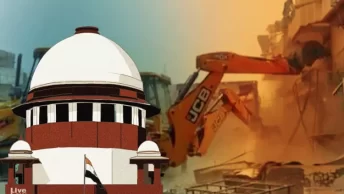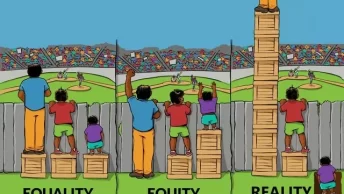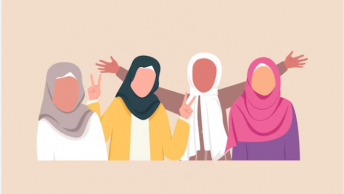On August 27, 2020, in State of Punjab vs Davinder Singh, the Supreme Court in a five-judge constitutional bench headed by Justice Arun Mishra deliberated on the validity of sub-classification in the reservation list for Scheduled Castes (SCs) and Scheduled Tribes (STs). The bench expressed its disagreement with an earlier decision by the court in EV Chinnaiah vs State of Andhra Pradesh (2005) and observed that these communities are not a homogenous group. It stated that the State governments were entitled to sub-classify within these groups to ensure the benefit of reservation to the most backward sections and referred the matter to a larger bench.
Landmark Judicial Precedents
One of the first instances in which the Supreme court encountered a question on sub-classification was the 1963 decision in the case of M.R. Balaji vs State of Mysore. In this case, the State had issued an order which divided the reserved seats for socially and economically backward classes (SEBCs) into backward classes and more backward classes in all engineering and medical colleges and technical institutions. However, the five-judge bench in this case struck down the order and held that under Article 15(4), the test for identification of backwardness should be both social and educational and that caste cannot be the sole basis for determining the same. Thus, the bench decided that the sub-classification of backward classes could not be allowed under Article 15(4).
Decades later, a nine-judge bench of the Supreme Court in Indra Sawhney vs Union of India (1992) (Mandal Commission Case) heard the matter pertaining to employment reservations in government jobs under Article 16(4) of the constitution. The bench in a 6:3 majority settled a long-standing debate on sub-classification in reservations and allowed further categorization within Other Backward Classes (OBCs). The Court held that Article 16(4) granted this sub-classification and the benefit of reservations should be conferred upon the more backward communities and the creamy layer should be barred from taking this advantage. Although the Court did not extend the application of the creamy layer to the SCs and the STs communities as the nature of discrimination faced by them is historically different and such an extension would defeat the purpose and object of reservation. This case sparked a discussion on sub-classification in SCs and STs.
The Supreme Court in E V. Chinnaiah vs State of Andhra Pradesh examined the validity of the Andhra Pradesh Scheduled Castes (Rationalisation of Reservations) Act, 2000, which was based on the Report of Justice Ramachandra Raju Commission. The Act categorized the castes in the Presidential List into four groups based on inter-se backwardness and fixed separate quota in reservation for each of these groups. The State claimed that some of the communities included in the list had become more advanced than others which created inequality within these groups. It argued that the advantage of reservations was received by a few while the most backward classes still remained deprived. The Court while rejecting these arguments held that this bifurcation was unconstitutional and identified the Scheduled Castes as a homogenous group that was already sufficiently classified for the purpose of Article 14. Additionally, the Court ruled that Article 341, which deals with the list of Scheduled Castes, only provided for modifications by the Parliament and that the state governments were not empowered to alter the list.
In the case of M. Nagaraj & Others vs Union of India (2006), the Supreme Court focused on the need for collecting quantifiable data to show backwardness and inadequate representation of a class other than SCs and STs for reservation in public employment. However, in the recent case of Jarnail Singh vs Lachhmi Narain Gupta (2018), while the Supreme Court unanimously held that M. Nagaraj does not need to be reconsidered by a larger bench, Justice Nariman stated that collection of quantifiable data was not a pre-requite for reservations in promotions according to Indra Sawhney where Justice Jeevan Reddy held that the expression ‘backward classes of citizens’ would unquestionably include SCs and STs. Accordingly, the Court struck down the need for demonstration of backwardness but held that the second criterion with respect to inadequate representation would still be valid.
The Case of Davinder Singh
In the case of Davinder Singh, a Constitutional bench comprising of Justices Arun Mishra, Indira Banerjee, Vineet Saran, M.R. Shah and Aniruddha Bose was asked to examine the validity of Section 4(5) of the Punjab Scheduled Caste and Backward Classes (Reservation in Services) Act, 2006 which made provision for sub-classification within the seats reserved for Scheduled Castes. According to this provision, fifty per cent of the vacancies of the quota reserved for Scheduled Castes in direct recruitment would be offered to Balmikis and Mazhabi Sikhs, subject to their availability, by providing them first preference from amongst the Scheduled Castes candidates. After a three-judge bench in 2014 referred the matter to a larger bench for consideration opining that the judgment in E.V. Chinnaiah is required to be revisited, the five-judge bench has now asked the matter to be referred to an even larger bench.
The State argued that the Court in E.V. Chinnaiah erroneously proceeded on the premise that affirmative action taken by the government, giving preference to certain Scheduled Castes under Article 16(4) would interfere with the Presidential List under Article 341. It further claimed that preferential treatment is a facet of equality under Article 14 and that any enactment giving such a treatment to more backward amongst the backward would fulfil the object of Article 16(4) as it is not only permissible but necessary to bring equality. The decision was argued to be inconsistent with the legal philosophy of the Constitution regarding equality and equal opportunity as it failed to recognize the difference in the social and economic reality within these communities and acknowledged them as a homogenous class.
However, while supporting the 2005 E.V. Chinnaiah judgment, the counsel contended that only Parliament had the power to modify the schedule lists as he relied on Dr. Ambedkar’s speech in the Constituent Assembly and argued that the purpose of Article 341 and 342 was to eliminate any kind of political factors having a play in the matter of causing a disturbance in the schedule so published by the President. It was also argued by the counsel that there was no need to revisit E.V. Chinnaiah as the judgment rightly interpreted Indra Sawhney where it was held sub-classification was limited to socially and educationally backward classes and these requirement could not be applied to SCs and STs.
After considering these arguments, the bench observed that the constitutional goals of social changes could not be fulfilled without bearing in mind the realities of social changes and agreed to endorse the opinion of revisiting the E.V. Chinnaiah decision.
A Closer Look at the Judgment
The Court while discussing the matter in Davinder Singh deliberated on the issue of whether sub-classification within the classes of SCs, STs and SEBCs would amount to exclusion under Article 341(2) particularly when the other castes in the list are not completely deprived of the benefits of reservations. It also looked into the matter of whether a classification based on intelligible differentia could be said to violate Articles 14 and 16 of the Constitution when there are visible inequalities among the various castes included within the list of Scheduled Castes. The Court in this case relied on Indra Sawhney where it was held that SCs and STs would be included within backward classes and the issue of whether SEBCs could be included in Article 16(4) was discussed. The bench opined that this observation made in Indra Sawhney was relevant for interpreting Article 16(4) and in determining its applicability to the abovementioned classes. The Court held that the SCs, STs and other backward classes stand at a similar footing and cannot be treated as different from others as also stimulated by the addition of Article 342A (102nd amendment) which is pari materia to Article 341 or 342. The judgment agreed with the observation made in the case of Jarnail Singh that the concept of ‘creamy layer’ could be applied to SCs and STs to ensure that the communities which are more backward are benefitted. It stated that if sub-classification is denied, it would defeat the object of the right to equality by treating unequal as equal. Acknowledging the State’s obligation to redistribute and reallocate resources and opportunities to eliminate inequality, the court opined that they have the power to make sub-classification within classes on a rational basis. Since the Court could not revisit the decision in E.V. Chinnaiah for it being a bench of coordinate strength, it referred the matter to a bench comprising seven judges or more.
Although, the court exhaustively considered the different views in E.V. Chinnaiah and Jarnail Singh and discussed various issues brought to the court in these cases, Justice Arun Mishra in his judgment failed to draw a clear distinction between the issue of creamy layer and sub-classification and treated their respective consequence in a similar fashion. Still, the Davinder Singh case can be looked at as an attempt by the court to make amends for the 2005 ruling and help in the upliftment of those backward classes that suffer at the bottom of the social hierarchy by trickling down the benefits of reservation to them.
Further Readings:
- Abhinav Chandrachud, Sub-Classification and Reservation, LiveLaw (September 6, 2020).
- Anuna Tiwari, Sub-Classification in Reservations, Indian Constitutional Law and Philosophy (September 3, 2020).
- Siddharth Seem, Sub-Classification of Scheduled Castes: Why the Chinnaiah Judgment Must Go, The Wire (August 24, 2020).
- Anup Surendranath, Limited Imagination on Reservation, Economic and Political Weekly, (September 12, 2020).
- Apurva Vishwanth, Explained: The ‘quota within quota’ debate, The Indian Express (September 1, 2020).
- Anup Surendranath, Judicial discourse on India’s affirmative action policies: the challenge and potential of sub-classification, Oxford University Research Archives (2013).
- Rashmi Venkatesan, Creamy Layer Judgment Ignores the Reality of Workplace Caste Discrimination, The Wire (October 5, 2018).
- Kailash Jeengar, Reservation Is About Adequate Representation, Not Poverty Eradication, The Wire (May 18, 2020).
- Apoorva Mandhani, There are unequals within SCs, STs’ — what Supreme Court said on quota sub-classification, The Print (August 28, 2020).
- N Vinoth Kumar, Why the clamour among Dalits over sub-quota for Arunthathiyars, The Federal (August 31, 2020).








Thank you for your sharing. I am worried that I lack creative ideas. It is your article that makes me full of hope. Thank you. But, I have a question, can you help me?